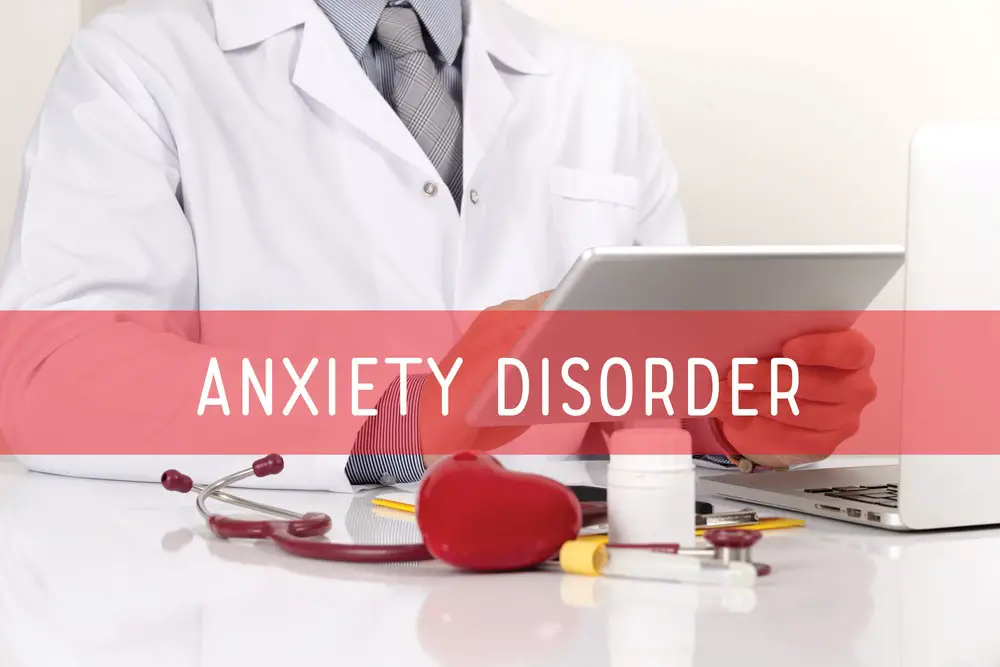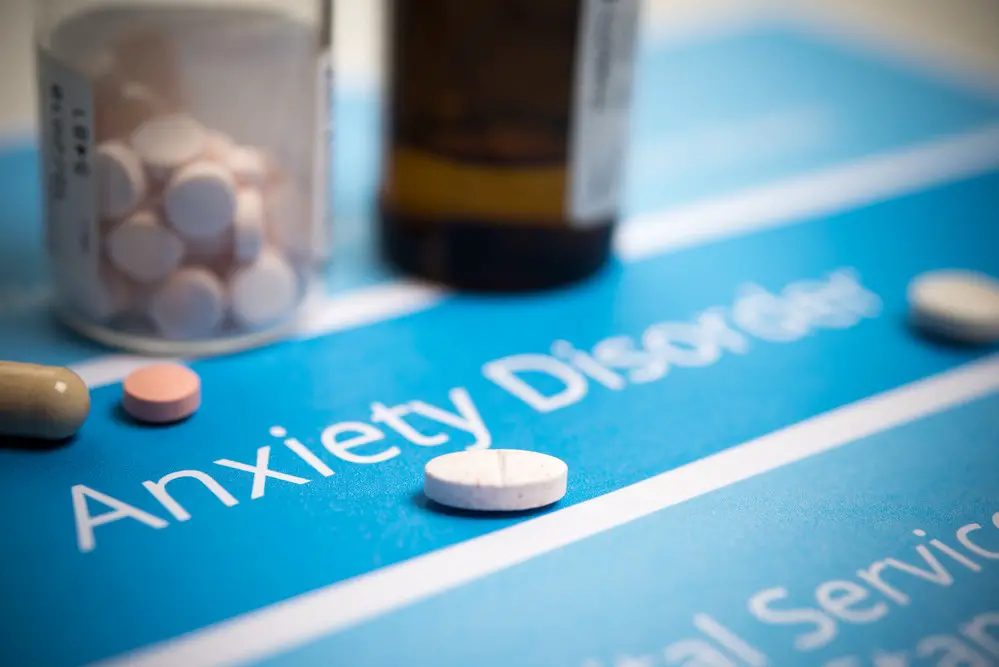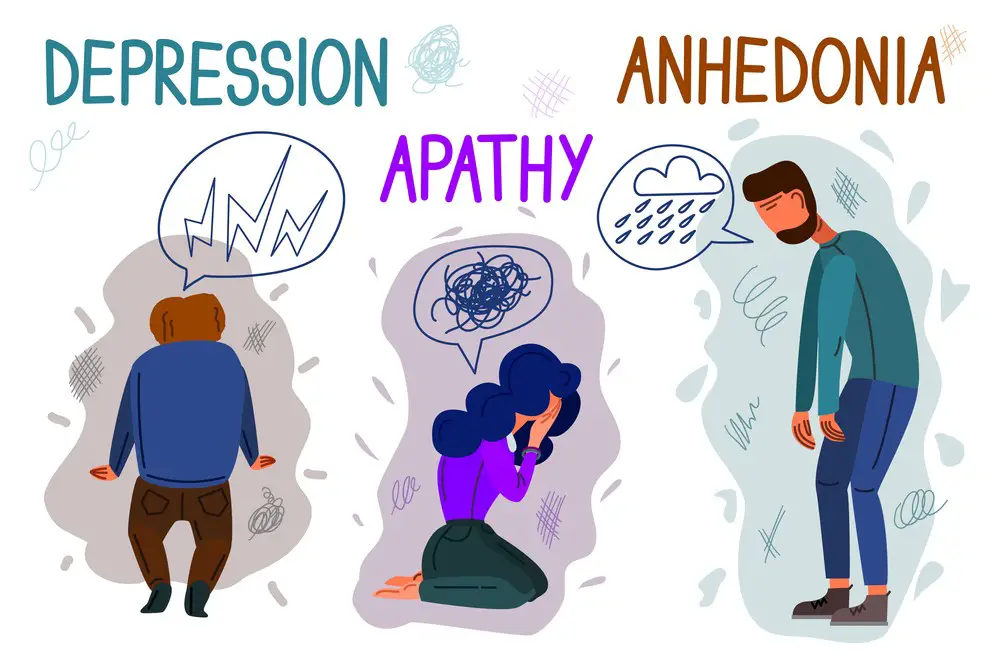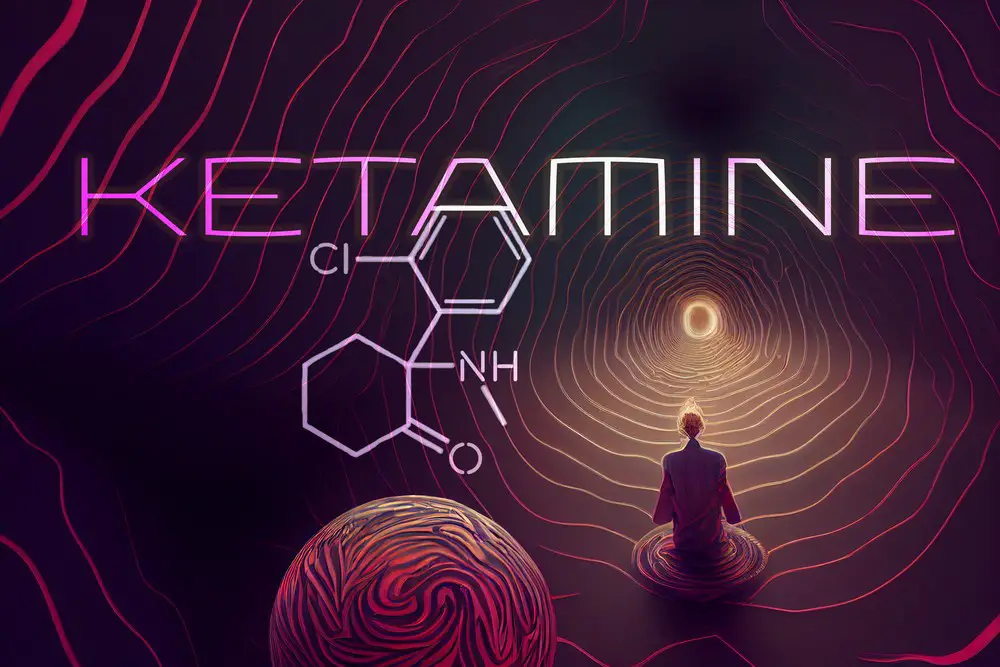Esketamine, a novel treatment for anxiety, has generated significant interest in the medical community. This medication, closely related to the anesthetic ketamine, offers a new approach to treating anxiety disorders and has shown promising results in clinical trials. As the prevalence of anxiety disorders continues to rise globally, the need for effective treatment options is becoming more urgent. Esketamine provides hope for those who have not succeeded with traditional treatments, such as selective serotonin reuptake inhibitors (SSRIs) and benzodiazepines.
The U.S. Food and Drug Administration (FDA) has already approved esketamine for treatment-resistant depression, sparking further research into its potential for treating anxiety disorders. The drug’s unique mechanism of action, which targets the N-methyl-D-aspartate (NMDA) receptor in the brain, sets it apart from traditional anxiety medications. Its rapid onset of action and the possibility of reduced side effects compared to current treatments have made esketamine a subject of much discussion and research among mental health professionals.
Key Takeaways
- Esketamine offers a novel approach to treating anxiety, particularly for those resistant to traditional medications.
- The FDA has approved esketamine for treatment-resistant depression, prompting further exploration of its potential for anxiety disorders.
- Esketamine’s unique mechanism of action and potential for reduced side effects distinguishes it from current treatments for anxiety.

Understanding Esketamine
Esketamine is a unique and relatively new antidepressant garnering attention in the medical community. It is a derivative of ketamine, a well-known anesthetic and recreational drug. However, esketamine has distinct properties that set it apart from its parent compound.
Esketamine works as an N-methyl-D-aspartate (NMDA) receptor antagonist, which means it blocks the action of glutamate, a neurotransmitter in the brain. This leads to increased synaptic plasticity, promoting the growth and repair of neuronal connections. These mechanisms are thought to contribute to its rapid and robust antidepressant effects.
Unlike traditional antidepressants, such as selective serotonin reuptake inhibitors (SSRIs), esketamine can alleviate depressive symptoms within hours or days, as opposed to the weeks or months typically associated with SSRIs. This makes it a potentially valuable option for individuals who suffer from treatment-resistant depression or require more immediate relief due to the severity of their symptoms.
In addition to its antidepressant properties, esketamine has shown promise as an anxiolytic, or anxiety-reducing, medication. Research has suggested that it may provide rapid relief of anxiety symptoms in some patients who have not responded to other treatments.
It is important to note that, like any medication, esketamine has potential side effects and risks. Commonly reported side effects include dizziness, dissociation, nausea, and increased blood pressure. It is administered under medical supervision via a nasal spray to mitigate these risks and ensure proper dosing.
As research continues to explore the potential benefits and drawbacks of esketamine, it is steadily making its mark as a novel and promising addition to the available antidepressant treatments. Its unique pharmacological profile and rapid action set it apart from other medications, providing hope to those struggling with depression and anxiety who have not found relief through traditional methods.

Esketamine in the Treatment of Anxiety
Esketamine, a derivative of ketamine, has been studied recently for its potential in treating various anxiety disorders. While it is primarily known for its FDA approval for treatment-resistant depression, its therapeutic effects on anxiety disorders such as generalized anxiety disorder (GAD), social anxiety disorder, and panic disorder are noteworthy.
Research indicates that esketamine is an N-methyl-D-aspartate (NMDA) receptor antagonist with rapid onset. This function differs from conventional anxiolytics and antidepressants, leading to further exploration of its potential in anxiety treatments. The rapid efficacy of esketamine is especially appealing for creating fast-acting anxiolytic effects.
Clinical trials have shown promising results for the treatment of GAD with esketamine. Patients experienced a significant reduction in anxiety symptoms, often reporting improvements within hours or a few days of treatment. This contrasts with traditional anxiolytics, which often take weeks to achieve their full effect. Additionally, esketamine may offer benefits in cases where individuals do not respond to standard anxiolytic medications.
The use of esketamine in treating social anxiety disorder also presents promising outcomes. In a study published in the Journal of Clinical Psychopharmacology, patients with social anxiety disorder demonstrated significant symptom reduction and improved social functioning after treatment with esketamine.
Moreover, in panic disorder management, preliminary data suggests that esketamine can reduce the frequency, intensity, and duration of panic attacks within a short period. While more research is needed, these findings indicate esketamine’s possible role in panic disorder treatment.
Though esketamine can potentially treat various anxiety disorders, it is essential to consider its side effects, including dissociation, dizziness, and increased blood pressure. Clinicians must weigh the risks and benefits for each patient, and long-term studies are needed to ascertain esketamine’s efficacy and safety as a treatment option for anxiety disorders. Nevertheless, its rapid onset and unique mechanism of action make esketamine an intriguing candidate in anxiety treatment.

Esketamine for Depression Treatment
Esketamine is a promising treatment for individuals suffering from depression, particularly those with treatment-resistant depression. It is a nasal spray medication derivative of ketamine known for its anesthetic and pain relief properties. This novel treatment has been developed to offer a fast-acting and efficacious option for patients who do not respond well to conventional antidepressants.
Treatment-resistant depression is a challenging condition where patients have not seen improvement in their depression symptoms despite trying two or more antidepressant medications. It affects many people diagnosed with major depression, characterized by persistent sadness, loss of interest in previously enjoyed activities, and difficulty in daily functioning. Esketamine offers hope to those who struggle to find relief through traditional treatment methods.
Clinical trials have demonstrated that esketamine can rapidly improve depressive symptoms, with some patients reporting noticeable changes within hours of administration. This fast-acting property sets it apart from most antidepressants, which typically require weeks of consistent use to provide substantial relief. Moreover, participants in these trials have shown reduced depression symptoms lasting up to several weeks after treatment, indicating esketamine’s potential for long-term efficacy.
The exact mechanism by which esketamine alleviates depression symptoms remains an area of ongoing research. Nonetheless, it is believed to work by modulating glutamate neurotransmission in the brain, enhancing neural plasticity and regeneration. This, in turn, can help improve mood regulation and cognitive function in affected individuals.
Despite its promise, it is important to mention that esketamine is not without its drawbacks. Possible side effects include dizziness, nausea, and dissociation, though these generally subside within a few hours of treatment. Additionally, due to its abuse potential and the need for close monitoring, esketamine is typically administered under healthcare professional supervision in a certified medical facility.
In conclusion, esketamine presents a valuable option for those with treatment-resistant depression who have not found relief in their symptoms through traditional antidepressant medications. Its rapid onset of action and its potential for long-term efficacy make it an appealing alternative for patients and healthcare providers. However, as with any medication, care should be taken in its use, and potential side effects must be considered.

The Effectiveness of Esketamine
Esketamine, a nasal spray medication, has been garnering attention as a potential treatment for anxiety. This medication is derived from the well-known drug ketamine and works by targeting the N-methyl-D-aspartate (NMDA) receptor in the brain. The effectiveness of esketamine for anxiety treatments has been the subject of various clinical trials and research studies.
Regarding response rate, esketamine has showcased promising results during these trials. It has been observed that patients who received esketamine demonstrated a significant improvement in their anxiety symptoms as compared to the placebo group. This implies that esketamine is effective in reducing anxiety.
Another key aspect of esketamine’s effectiveness is the remission rate. Remission refers to the complete absence of symptoms, meaning the patient’s anxiety ceases to be an obstacle in their daily life. Research has indicated that many patients under esketamine treatment experienced remission from their anxiety symptoms. This ability to achieve remission makes esketamine a promising choice for individuals seeking alternative treatment options for anxiety.
Esketamine’s quick response time is also noteworthy. Compared to traditional treatments, which may take weeks to show results, esketamine has demonstrated rapid relief of symptoms in some patients. This accelerated action can be particularly beneficial for individuals suffering from severe anxiety who require immediate respite.
It is important to remember that esketamine’s effectiveness may vary among patients, as with various medications and treatments. While esketamine has proven effective and even transformative for some individuals, it might not yield the same results for others. Therefore, it is essential to closely monitor and evaluate each patient’s progress to determine whether esketamine is appropriate for their specific needs.

Side Effects and Risks
Esketamine, a nasal spray medication for anxiety, has been associated with various side effects and risks. When considering esketamine as a treatment option, it is essential to understand its potential impact on an individual’s health.
One common side effect of esketamine is nausea. After administration, some patients may experience an unsettled stomach, leading to episodes of vomiting. Another frequent side effect is dizziness, making it challenging for the individual to maintain balance or focus on tasks.
Patients may also experience headaches as a result of using esketamine. These headaches can range from mild to severe, sometimes requiring additional medication to manage the discomfort. It is essential to monitor and report changes in the intensity of headaches to a healthcare professional.
Esketamine is also linked to some patients’ increased or high blood pressure. This condition can pose significant health risks, especially for those with pre-existing heart conditions or a history of hypertension. Regular blood pressure monitoring is necessary during esketamine treatment to ensure it remains within a safe range.
Memory problems may also arise as a side effect of esketamine use. Patients might experience difficulty recalling information or struggle with short-term memory loss. It is crucial to discuss any concerns regarding memory function with a healthcare professional, as adjustments to the treatment plan may be necessary.
In conclusion, a thorough understanding of the side effects and risks associated with esketamine is essential for patients and healthcare providers. Individuals can decide about their anxiety treatment options by staying informed and closely monitoring symptoms.
FDA Approval of Esketamine
In March 2019, the FDA approved esketamine for treating treatment-resistant depression. This approval marked a significant development in the mental health field, as esketamine is the first novel antidepressant with a different mechanism of action in decades. Janssen Pharmaceuticals, a division of Johnson & Johnson, developed the drug under the brand name Spravato.
Esketamine is a variant of the anesthetic ketamine, which has been used off-label for depression and anxiety. As a nasal spray, esketamine offers an alternative to oral medications and intravenous infusions for patients with treatment-resistant depression.
The FDA evaluated the safety and efficacy of esketamine through a series of clinical trials. Participants in these trials had previously not responded to at least two different antidepressant treatments. The studies showed that esketamine, in conjunction with an oral antidepressant, led to significant improvements in depressive symptoms compared to the oral antidepressant alone.
However, the FDA has strictly controlled esketamine’s distribution and administration. Due to its potential for abuse and dissociative side effects, the drug can only be administered under the supervision of a healthcare provider in a certified medical facility. Patients cannot take the medication home and must be monitored for at least two hours after treatment.
While the FDA has approved esketamine for treatment-resistant depression, its use for anxiety remains under investigation. Clinicians and researchers are hopeful that further studies will illuminate esketamine’s potential benefits in treating anxiety disorders, broadening the range of treatment options for patients.
In summary, the FDA approves esketamine as a promising new option for patients with treatment-resistant depression. With strict controls in place, the drug offers an alternative mode of administration and a novel approach to targeting depressive symptoms. Its potential use in treating anxiety warrants further research and exploration.
Clinical Trials and Studies
Esketamine has been the subject of numerous clinical trials and studies to evaluate its efficacy and safety in treating anxiety disorders. In these trials, participants were typically divided into two groups. One group received esketamine treatment, while the other received a placebo. Both groups were then compared to ascertain the response rate and therapeutic benefits.
Several studies have shown promise in esketamine’s ability to alleviate anxiety symptoms. In one notable trial, participants with treatment-resistant anxiety disorders experienced significant reductions in their anxiety symptoms after receiving esketamine compared to those receiving the placebo. This demonstrates that esketamine has the potential to be an effective treatment option for individuals who do not respond adequately to traditional anxiety therapies.
Additionally, research has shown that the therapeutic effects of esketamine may also be faster-acting than traditional treatments. In some studies, participants reported improvements in anxiety symptoms within hours of esketamine treatment. This rapid response rate is essential, considering that many individuals suffering from severe anxiety often require immediate intervention.
Despite these promising results, responding to the treatment with esketamine does not guarantee relief for all individuals. Some clinical trials have reported mixed results, with certain participants not experiencing significant improvements in their anxiety symptoms. As with all medical treatments, an individual’s response to esketamine will vary depending on several factors, including their specific anxiety disorder, medical history, and the severity of their symptoms.
Throughout the clinical trials and studies, the safety and side effect profile of esketamine has also been thoroughly examined. Common side effects reported include dizziness, nausea, dissociation, and blood pressure changes. Most side effects were short-lived and manageable, with close monitoring of the participants during the treatment sessions.
In summary, esketamine is a promising treatment option for anxiety, particularly for those not responding to traditional therapies. The clinical trials and studies conducted so far exhibit its potential effectiveness and generally favorable safety profile. However, further research is needed to optimize treatment protocols and understand the factors influencing individual response rates.
Administration of Esketamine
Esketamine is primarily administered through nasal spray to treat anxiety and depression. It is derived from ketamine, an anesthetic drug, and is an NMDA receptor antagonist.
Before using esketamine, patients should carefully read the medication guide provided by their healthcare professional. This guide offers essential information about proper dosage, possible side effects, and safety precautions. It is vital to follow the prescribed instructions to ensure the medication’s effectiveness and minimize any adverse reactions.
Esketamine is administered in a clinical setting under the supervision of a healthcare professional. The dosage and duration of treatment depend on the individual’s specific condition and response to therapy. While esketamine has shown promise in alleviating symptoms of anxiety and depression, it is essential to use it with other treatments, such as psychotherapy and other medications.
Healthcare providers closely monitor the patient’s vital signs and well-being during treatment. This monitoring helps identify potential side effects, ensuring the patient’s safety and well-being.
In conclusion, esketamine administration should follow the guidelines outlined in the medication guide. Utilizing the nasal spray in a clinic setting provides a controlled environment, allowing healthcare professionals to monitor and manage any potential side effects during treatment.
Co-existing Conditions and Esketamine
Esketamine, a derivative of ketamine, has shown promise in treating various mental health conditions, including anxiety. Its effectiveness in addressing comorbid anxiety symptoms makes it a valuable option for patients with multiple psychiatric diagnoses.
For individuals suffering from post-traumatic stress disorder (PTSD), esketamine may provide significant relief. PTSD often co-occurs with anxiety, and clinical trials have demonstrated that esketamine effectively reduces symptoms in treatment-resistant patients. By targeting glutamatergic pathways in the brain, esketamine can offer rapid relief, potentially improving PTSD and anxiety symptoms.
Obsessive-compulsive disorder (OCD) is another mental health condition often associated with anxiety. Although further research is needed, preliminary studies suggest that esketamine has the potential to be a valuable adjunctive treatment for patients with OCD. Its ability to rapidly alleviate symptoms may benefit individuals experiencing acute episodes of anxiety related to their OCD.
When treating comorbid anxiety, it is essential to consider the potential interactions between esketamine and other medications. Esketamine can have synergistic or antagonistic effects when combined with common medications used to treat mental health disorders. Clinicians should carefully assess each patient’s unique needs and closely monitor their response to treatment.
In summary, esketamine offers a promising option for those struggling with co-existing anxiety and other mental health conditions such as PTSD and OCD. As more research becomes available, it is expected that esketamine will continue to be a valuable tool in treating these complex cases.
Addressing Suicidal Thoughts
Esketamine, an FDA-approved medication for treatment-resistant depression, shows promise in addressing suicidal thoughts. Unlike traditional selective serotonin reuptake inhibitors (SSRIs) such as Prozac, Celexa, and Zoloft, esketamine has a unique mechanism of action that allows for a more rapid onset of symptom improvement.
SSRIs work by increasing the availability of serotonin in the brain, which can help improve mood and anxiety symptoms. However, these medications can take weeks to reach their full effect and in some cases, may even exacerbate suicidal thoughts in the initial stages of treatment. This presents a challenge for individuals experiencing an acute crisis.
In contrast, esketamine acts on the NMDA receptor, causing an increase in glutamate levels and consequent rapid improvement in depressive symptoms, potentially including suicidal thoughts. This fast-acting effect may benefit those urgently needing relief in crises.
It is essential to note that while esketamine offers an effective alternative treatment, qualified healthcare providers should carefully monitor its use. This is due to the potential for abuse and varying individual responses to the medication.
In conclusion, esketamine represents a promising option for addressing suicidal thoughts, particularly when traditional SSRIs may not provide rapid relief. Its unique mechanism of action serves as a valuable alternative for those needing urgent intervention.
Esketamine and Other Drugs
Esketamine is a novel medication approved for treating major depressive disorder and anxiety, particularly in cases resistant to traditional treatments. It is related to ketamine, a well-known anesthetic, but acts more specifically on the brain’s N-methyl-D-aspartate (NMDA) receptors.
Combining Esketamine with Other Medications
When considering the use of esketamine in treating anxiety, it’s important to note its interactions with other drugs. In some instances, the combined use of esketamine and other medications may enhance the antidepressant effect, while in others, it may lead to harmful consequences.
- Selective Serotonin Reuptake Inhibitors (SSRIs) and Serotonin-Norepinephrine Reuptake Inhibitors (SNRIs): As the primary pharmacological treatments for anxiety and depression, combining esketamine with SSRIs or SNRIs may offer a synergistic effect. However, this combination is not without risks, and careful monitoring is required to avoid potential adverse effects such as serotonin syndrome.
- Monoamine Oxidase Inhibitors (MAOIs): Due to the risk of severe blood pressure changes, the concurrent use of esketamine and MAOIs is contraindicated. It is advised that patients receiving MAOIs should discontinue their treatment at least two weeks before initiating esketamine.
- Benzodiazepines and Sedative-Hypnotics: Combining esketamine with benzodiazepines or other sedative-hypnotic drugs increases the risk of sedation, dizziness, and cognitive impairment. A careful assessment of the patient’s level of anxiety and existing medication regimen should guide the decision to introduce esketamine in the presence of these drugs.
Side Effects Compared to Other Antidepressants
Esketamine’s side effect profile differs from that of traditional antidepressants. The most common side effects include dizziness, dissociation, nausea, and increased blood pressure. These side effects are usually transient and decline over time.
In contrast, traditional antidepressants such as SSRIs and SNRIs may cause side effects like weight gain, sexual dysfunction, and gastrointestinal disturbances. Given the distinct side effect profiles, clinicians must weigh the potential benefits and risks of esketamine alongside these other medications for each patient.
Potential for Misuse and Abuse
As a psychoactive substance, esketamine can lead to dependence and addiction in some individuals. Its dissociative effects, which can induce feelings of detachment from one’s environment and self, particularly appeal to recreational users. This can result in individuals seeking the drug for non-medical reasons, increasing the risk of misuse.
Additionally, esketamine’s rapid onset of action is another factor that might contribute to its abuse potential. Users may be inclined to take higher doses or use the substance more frequently to achieve a more intense experience, increasing the risk of abuse.
Moreover, the availability and accessibility of esketamine could also contribute to its potential for misuse. As more people become aware of its uses and effects, there is a possibility that some individuals might attempt to obtain the drug without proper medical supervision.
Regulatory authorities and healthcare professionals must work together to establish and enforce strict guidelines for esketamine’s prescription and distribution to mitigate the potential for misuse and abuse. Educating patients and the general public about the risks associated with the substance is also crucial.
In conclusion, while esketamine holds promising therapeutic potential for individuals suffering from anxiety disorders, it is essential to recognize and address the potential risks associated with its misuse and abuse. By implementing effective policies and promoting education, the benefits of this innovative treatment can be maximized without compromising public health and safety.
Frequently Asked Questions
How does esketamine work for anxiety?
Esketamine is a nasal spray medication that acts upon the brain’s NMDA receptors. It has an anesthetic and analgesic effect, which may help reduce anxiety symptoms by reducing excitatory neurotransmission. This effectively alleviates anxiety by increasing the overall inhibition in the brain, promoting a calming effect.
What is the typical dosage of esketamine?
The typical dosage of esketamine for anxiety varies depending on an individual’s needs and response to the medication. A healthcare provider will determine the appropriate dose based on anxiety severity and other coexisting conditions. Patients must follow their healthcare provider’s instructions and not self-medicate or alter their dosage without consulting a professional.
What are common side effects of esketamine?
Common side effects of esketamine may include dizziness, nausea, increased blood pressure, and dissociation. Some individuals may also experience vertigo, drowsiness, or a metallic taste in their mouth. Users must report any side effects to their healthcare provider to adjust dosages or explore alternative treatments.
Can esketamine be prescribed for anxiety?
Esketamine is primarily approved for treatment-resistant depression; however, some healthcare providers may prescribe it off-label for anxiety disorders, particularly in cases where other treatments have been ineffective. Patients should consult their healthcare provider to discuss whether esketamine could be a suitable treatment option for their anxiety.
Where can I find esketamine treatment?
Esketamine treatment can typically be found at specialized clinics and healthcare facilities. Due to the nature of the medication and the potential for side effects, it is usually administered under the supervision of a healthcare professional. Patients seeking esketamine treatment are advised to contact their healthcare provider for information and referrals to suitable specialists.
What do esketamine users say about its effectiveness?
Esketamine users’ experiences may vary, with some reporting significant relief from anxiety symptoms. In contrast, others may not experience the desired results or find that the side effects outweigh the benefits. As with any treatment, the effectiveness of esketamine varies on a case-by-case basis, and individuals need to work closely with their healthcare provider to monitor their progress and adjust the treatment plan as necessary.
As someone who has struggled with mental health challenges while navigating a difficult custody battle with a narcissistic ex-partner, I know firsthand how challenging it can be to manage one’s mental health in the face of such obstacles. I take Lexapro to help manage my symptoms and prioritize self-care practices like taking long daily walks. Despite my ex-partner’s consistent refusal to comply with court orders and allow me communication with my children, I remain committed to fighting for what’s best for them. I write articles about mental health and narcissism to help others dealing with similar challenges and provide support and encouragement for those who need it.
- How to Achieve Better Sleep by Blocking Blue Light Exposure - February 18, 2024
- Best Tea for Sleep: Top Choices to Help You Drift Off Naturally - February 17, 2024
- How to Increase Deep Sleep: Strategies for More Restorative Rest - February 17, 2024
This site contains affiliate links to products. We will receive a commission for purchases made through these links.




